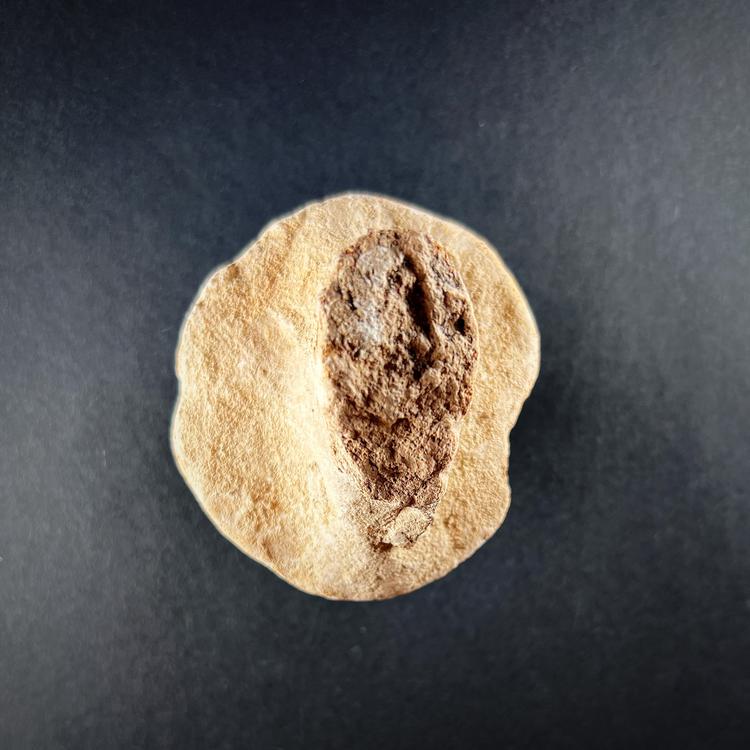Cypro-Archaic Terracotta Chariot Wheel Fragment
Cypro-Archaic Terracotta Chariot Wheel Fragment
Couldn't load pickup availability
Cypro-Archaic Period I-II, c. 700-475 BC, Kourion, Republic of Cyprus
This fascinating fragment represents a hand-modeled, disc-shaped chariot wheel from the Cypro-Archaic terracotta horse and rider group. Crafted from terracotta, the wheel is adorned with clay pellets designed to imitate wooden pegs. The tubular hubs on either side were intended to receive an axle, indicating that this piece is part of a model chariot used for votive purposes.
Cypriots during the Archaic Period (c. 700-475 BC) were skilled in creating simple, yet effective, handmade figurines and models. This chariot wheel, part of a larger quadriga model, reflects the period's focus on military and religious practices. Terracotta models of chariots and horses, commonly used as votive offerings, were left in sanctuaries to honor the gods or placed in the graves of the wealthy as part of their burial rites.
The prominence of chariots in Cypriot culture during this time is indicative of an elite society where horse and rider, particularly in warfare, held significant status. Chariotry and cavalry played key roles in military conflicts, and these terracotta models, including the horse and rider figurines, reflect this aspect of life in ancient Cyprus.The sanctuary of Apollo Hylates at Kourion is home to numerous examples of such votive offerings, and the god Hylates, later equated with the Greek god Apollo, was often associated with the protection and guidance of warriors. Other sites, such as the sanctuary of Avia Irini, have yielded significant finds of war chariots, underscoring the importance of chariotry in Cypriot religious and military traditions.
Good condition. Age-related wear and corrosion. Chip and nicks. The object is covered with a thin layer of earthy encrustation. Size approx. 6,6cm x 5,1cm x 6,0cm.
Provenance: According to information, from the collection of professor Dr. Med. Albert Fischer, 1891–1956. Founder and director of the Carlsberg Foundation biological institute, Copenhagen (1932–1956). Albert Fischer acquired antiquities during his travels in the 1930s-1950s.
For a similar examples see:
Chariot wheel, The Metropolitan Museum of Art, Accession Number: 74.51.490 (https://www.metmuseum.org/art/collection/search/240076)
Chariot group, The Metropolitan Museum of Art, Accession Number: 74.51.1800 (https://www.metmuseum.org/art/collection/search/241355)
Terracotta horse and rider figurine (tomb gift), Ashmolean Museum, University of Oxford, Accession Number: AN1888.1267 (https://collections.ashmolean.org/object/304807)
References and further reading:
Terracotta Figurines from Kourion in Cyprus, John Howard Young & Suzanne Halstead Young, Published by: The University Museum, University of Pennsylvania, Philadelphia, 1955.
Handbook of the Cesnola Collection of Antiquities from Cyprus, John L. Myres, The Metropolitan Museum of Art, 1914.
Horse and Rider Figurines from Ancient Marion, Chelsea Walter, Arizona State University, December 2014.


-
Shipping
The shipment will be prepared in the course of 3-5 days and dispatched via Posti Group Oyj or purchased item(s) can be picked up from our shop during the store's opening hours (Tarkk’ampujankatu 4, 00140, Helsinki, Finland). Within the Finland, all items are shipped via Posti Group Oyj unless otherwise requested. We pack the items carefully and mainly in recycled materials because we want to save nature. You will receive the tracking number for your items by e-mail.
-
Returns
Returns and exchange will be accepted within fourteen days (14) of receipt at the purchaser’s cost to include freight and packaging. Items must be returned in the same condition as when they were shipped, and will not be accepted if damaged or altered in any way. Please inform us via email (info@gotanmaailma.fi) or by calling +358408408352 before sending. We do not accept returns more than 14 days after delivery.


